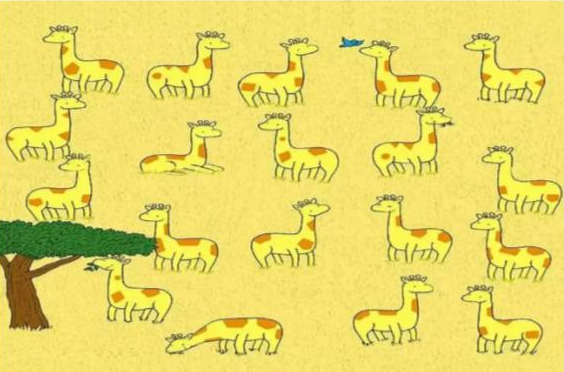Between two or more numbers, there are always multiple that are common to them. The smallest of these, non-zero, is called least common multiple (MMC).
The multiples of a number are all those that we get as a result of multiplying the number by one natural number (0, 1, 2, 3, 4, 5, …).
see more
Students from Rio de Janeiro will compete for medals at the Olympics…
The Institute of Mathematics is open for registration for the Olympics…
Learn more about this topic from a list of least common multiple exercises that we have prepared for you!
In addition to multiple choice questions, you can check problems with MMC, all of them with resolution and feedback!
List of Least Common Multiple Exercises — MMC
Question 1. The MMC between 10 and 12 is 60. Since 180 is a multiple of 10 and 12, then:
a) ( ) 180 is divisor of 60.
b) ( ) 180 and 60 are prime to each other.
c) ( ) 180 is a multiple of 60.
Question 2. Without doing calculations, we can say that the MMC between 25 and 50 is:
a) ( ) 50, because 50 is a multiple of 25.
b) ( ) 25, because 25 is a divisor of 50.
c) ( ) 50, because 50 is the highest.
Question 3. If MMC(a, b) = 54, then:
a) ( ) any multiple of a is a multiple of 54.
b) ( ) 54 is divisible by any multiple of b.
c) ( ) Any multiple of a and b is a multiple of 54.
Question 4. The LMM between x and 5x is equal to:
a) ( ) 5, because 5x: x = 5.
b) ( ) 5x, because 5x is a multiple of x.
c) ( ) x, because x is a divisor of x and 5x.
Question 5. Ruth and Mary go to the same bookstore. Ruth goes to the bookstore every 15 days and Maria every 21 days. If they meet at the bookstore today, how many days from now will they meet there again?
Question 6. In one neighborhood, the garbage collection truck passes every 8 days and the selective collection truck passes every two weeks. If 20 days ago they both passed, how many days from now will they pass the same day again?
Question 7. Luís, Carlos and André are bus drivers. Luís takes 2 days to complete his route and return to the starting point, Carlos takes 4 days and André, 9 days. If 30 days ago the three drivers left on the same day, how many days from now will they leave together?
Resolution of question 1
The MMC between 10 and 12 is 60. Since 180 is a multiple of 10 and 12, then 180 is a multiple of 60.
Correct alternative: c
Resolution of question 2
Without doing calculations, we can say that the LCM between 25 and 50 is 50, because 50 is a multiple of 25.
Correct alternative: a
Resolution of question 3
If MMC(a, b) = 54, then any multiple of a and b is a multiple of 54.
Correct alternative: c
Resolution of question 4
The LCM between x and 5x is equal to 5x, since 5x is a multiple of x.
Correct alternative: b
Resolution of question 5
Ruth goes to the bookstore every 15 days, so counting from today, she will return in 15 days, 30 days, 45 days, 60 days, and so on.
All of these day amounts are multiples of 15.
Maria goes to the bookstore every 21 days, so counting from today, she'll be back in 21 days, 42 days, 63 days, 84 days, and so on.
All of these day amounts are multiples of 21.
Thus, the two will meet again on days that are multiples of 15 and also of 21. The first of these days is the least common multiple.
So let's calculate the least common multiple between 15 and 21:
15, 21 | 3
5, 7 | 5
1, 7 | 7
1, 1
So the MMC(15, 21) = 3. 5. 7 = 105. This means that Ruth and Mary will meet again in 105 days.
Resolution of question 6
Let's calculate the MMC between 8 and 14:
8, 14 | 2
4, 7 | 2
2, 7 | 2
1, 7 | 7
1, 1
So the MMC(8, 14) = 2. 2. 2. 7 = 56.
This means that trucks pass on the same day every 56 days. If the last time this happened was 20 days ago, then it will happen again on the same day 56 – 20 = 36 days from now.
Resolution of question 7
Let's calculate the MMC between 2, 4 and 9:
2, 4, 9 | 2
1, 2, 9 | 2
1, 1, 9 | 3
1, 1, 3 | 3
1, 1, 1
So LMM(2, 4, 9) = 2. 2. 3. 3 = 36. This means drivers depart on the same day every 36 days.
Therefore, if the drivers departed together 30 days ago, they will depart on the same date 36 – 30 = 6 days from now.
You may also be interested:
- Divisibility criteria
- How to add and subtract fractions
- Greatest common divisor – GCD


